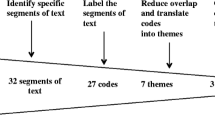Abstract
An efficient, accurate and practical process for prioritising requirements is of great importance in commercial software developments. This article improves an existing cost-value approach in which stakeholders compare all unique pairs of candidate requirements according to their value and their cost of implementation. Techniques for reducing the required number of comparisons are suggested, thus making the process more efficient. An initial approach for managing requirements interdependencies is proposed. A support tool for the improved process has been developed to make the process more practical in commercial developments. The improved process and its support tool have been applied and evaluated in an industrial project at Ericsson Radio Systems AB. The results indicate a pressing need for mature processes for prioritising requirements, and the work presented here is an important step in that direction.
Similar content being viewed by others
References
Karlsson J, Ryan K. Supporting the selection of software requirements. In 8th International workshop on software specification and design, 1996, pp. 146–149.
Karlsson J, Ryan K. Prioritising requirements using a cost-value approach. IEEE Software, to appear
Saaty TL. The analytic hierarchy process. McGraw-Hill, New York, 1980
Potts C. Software engineering research revisited, IEEE Software 1993; 10(5): 19–28
Carr W, Kemmis S. Becoming critical: educational, knowledge and action research. Falmer Press, 1986
Mansell G. Action research in information systems development. J Inform Syst 1991; 1(1): 29–40
Bubenko JA Jr. Challenges in requirements engineering. In 2nd IEEE international symposium on requirements engineering, 1995, pp. 160–162
Lubars M, Potts C, Richter C. A review of the state of the practice in requirements modeling. In IEEE international symposium on requirements engineering, 1993, pp. 2–14
Zave P. Classification of research efforts in requirements engineering. In 2nd IEEE international symposium on requirements engineering, 1995, pp. 214–216
Karlsson J. Software requirements prioritising. In 2nd IEEE international conference on requirements engineering, 1996, pp. 110–116
Stevens SS. On the theory of scales of measurement. Science 1946; 103: (2648) 677–680
Davis A. Software requirements: objects, functions and states. Prentice-Hall, Englewood Cliffs, NJ, 1993
Harker P. Incomplete pair-wise comparisons in the analytic hiearchy process. Math Modelling 1987; 9(11): 837–848
Millet I, Harker P. Globally effective questioning in the analytic hierarchy process. Eur J. OR 1990; 48(1): 88–97
Shen Y, Hoerl AE, McConnell W. An incomplete design in the analytic hierarchy process. Math Comput Modelling 1992, 16(5): 121–129
Olsson S. Improving and supporting the contribution-based method (CBM), MSc thesis 9597, Department of Computer and Information Science, Linköping University, 1996
Author information
Authors and Affiliations
Corresponding author
Rights and permissions
About this article
Cite this article
Karlsson, J., Olsson, S. & Ryan, K. Improved practical support for large-scale requirements prioritising. Requirements Eng 2, 51–60 (1997). https://doi.org/10.1007/BF02802897
Issue Date:
DOI: https://doi.org/10.1007/BF02802897




